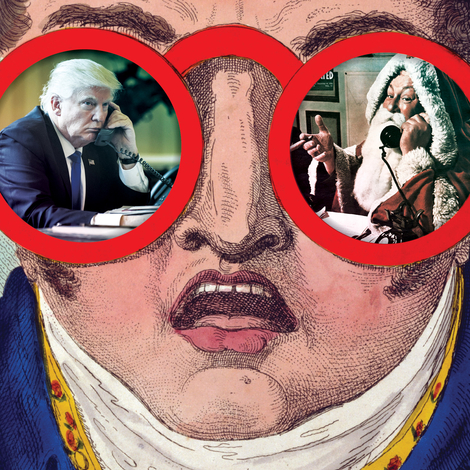I met Harry Medved at a thing I can’t tell you about. Wish I could. Suffice it to say that we were both there to speak expertly about Edward D. Wood Jr., who directed Plan 9 from Outer Space, which Harry and his brother, Michael, had declared the worst movie of all time. I had written a monograph on the film, but Harry had much greater fame: in the 1980s, he and Michael wrote a series of books about terrible movies, which became bibles for fans of low-quality cinema.
Like recognizes like, and Harry and I ended up whispering to each other for almost an hour while another interview went on in the foreground. After I explained my upcoming book project—Junk Film, a collection of critical essays about bad movies such as Plan 9 from Outer Space—he offered to blurb it for me. I said thanks, but it was possibly too late, as I’d already gathered three blurbs and was set to start using them for promotion the following week. “Who’d you get?” he asked.
“Well, Ty Burr,” I said. Harry made an appreciative noise. “And Mary Jo Pehl.” He nodded approvingly. “And, actually, Greg Sestero.”
“Oh, perfect,” he said. “Great choices.”
I agreed, but I also felt a quiet melting sensation in my chest. Of the dozens of people I’d talked to about my book, and reported to proudly about who’d agreed to blurb it, no one had known all of my chosen blurbers by name. Most people knew one or two, but not all three. Harry was the first one who had, and his understanding of why these three people were so right for the job made me as happy as I’d been in weeks.
Ty Burr is the former film critic for The Boston Globe, and he wrote one of my favorite books about film: Gods Like Us, about the nature of celebrity across film history. Mary Jo Pehl is a comedienne, a former cast member on Mystery Science Theater 3000, and one of the few women to walk safely in the bad-movie trenches. Greg Sestero is an actor and director, one of the stars of The Room, and the writer of another of my favorite books about film, The Disaster Artist.
I understand why most people don’t know all three of these names. Burr lives in the rarefied air of “real” film criticism, where people don’t watch movies such as Plan 9 from Outer Space or The Room. Pehl belongs largely to the comedy world, although most fans of bad movies know her work. And Sestero is extremely well known in the midnight-movie circuit, but the circles of cult film and bad film don’t always overlap.
Still, it made me sad to have to explain at least one of these people to everyone I talked to. The point of my book is to bridge these worlds—to help cinephiles understand how much they need the ballast of bad art, and to demonstrate to bad-film fans that their beloved movies can be studied seriously. Folks who knew Burr’s name and not Sestero’s demonstrated exactly why I wrote the book: not enough people who study film are true omnivores. They have no idea what useful lessons they’re missing in ignoring bad movies. Meanwhile, people who knew Sestero’s name and not Burr’s indicated that not enough people who like bad movies follow along with mainstream criticism well enough to speak and write responsibly about film.
Not enough people who study film are true omnivores.
I considered levels and types of fame when I chose the films I’d write about, too. Showgirls is pretty well known as a turkey, so I wrote about it to draw readers in; I paired it with Staying Alive, which fewer folks have seen (alas). Attack of the 50 Foot Woman, with its terrific poster, disappointed me, so I wrote about why. If people pick the book up for that commentary, they might stay for my defense of Death Bed: The Bed That Eats. These choices were strategic, if guided by my own passions.
The same philosophy held when I requested blurbs. A blurb attaches a recognizable, trustworthy name to a new reading experience. The reader can look at the blurb and think, Oh, I trust that person’s judgment. Maybe I’ll like the book. I knew in choosing these three people—all of whom I admire tremendously—that I’d be coding the book for various groups of readers, although I didn’t quite know how minimally those groups would overlap. Having to explain one group’s affinities to the other’s has proved exasperating. Which brings me back to the relief and joy I felt when, talking to Harry Medved, I had to explain nothing.
Did I write the book just for Harry and me? No. A bridge necessarily spans two disparate areas, and I signed up for that kind of travel when I wrote Junk Film. I expect more people will want to talk to me about Showgirls than they will about Staying Alive. The blurbers I chose demonstrated neatly the areas I’d be visiting, as it turned out, and how much distance lies between them.

Katharine Coldiron is the author of Ceremonials and a critic whose work has appeared in Ms., Conjunctions, the Washington Post, the Guardian, the Los Angeles Review of Books, and more. Her new book, Junk Film: Why Bad Movies Matter, will be published by Castle Bridge Media on May 2

